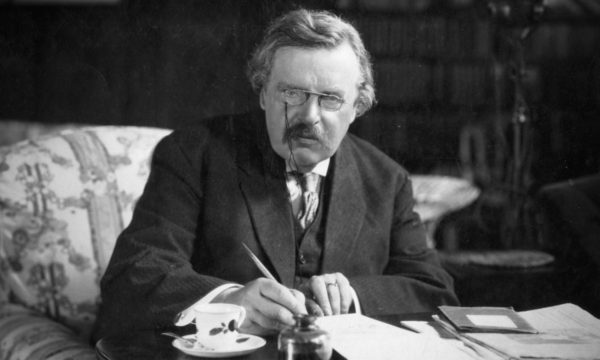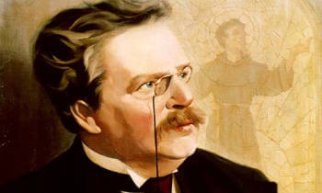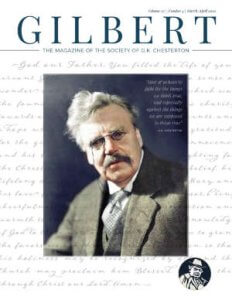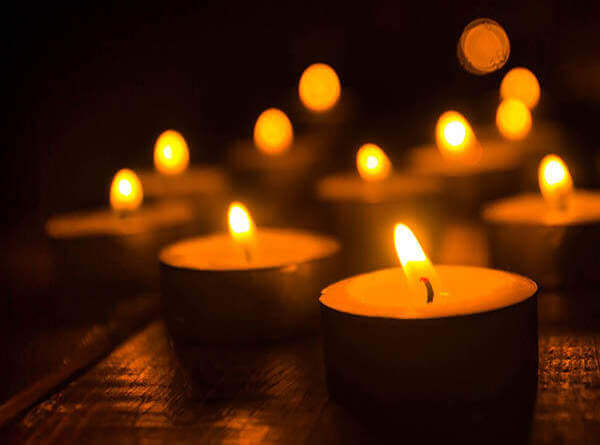One could argue that this was the first book that G.K. Chesterton wrote after his conversion. It was originally a series of magazines articles published in 1922, just after Chesterton was received into the Catholic Church, but the articles did not appear in book form until 1961.
It is here where Chesterton gives as his initial reasons for joining the Church. But he starts by pointing out that there was such a Catholic resurgence taking place at the time that many people were compelled to give their reasons for not joining the Church, which, it turned out, was more difficult to do. As soon as one begins to list one’s objections to the Church, a process of kicking and struggling begins.
Since the Church was “on the march,” Chesterton did not regard his decision to join it as particularly difficult: “no credit, beyond that of common intelligence, really belongs to anyone who has joined it when it is so evidently the hope of the world.”
Even though Catholicism is referred to as “the old religion,” it is, strangely, not old. It has an “unearthly freshness.” It refuses to grow old. The things that grow old are the heresies. In fact, the heresies often come and go before the Church has fully formulated a response to them, since the Church studies the heresies more carefully than even the heresiarchs do. So, too, says Chesterton, “The Church cannot change quite so fast as the charges against her do.”
He mentions here for the first time something he would repeat elsewhere, including in his Autobiography: that when he read the Penny Catechism he was struck by the phrase that the two sins against hope are presumption and despair. This exactly summed up the battles that he was fighting on two fronts against the optimists and the pessimists. “The heresies that attacked human happiness in my times have all been variations either of presumption or of despair.”
He is drawn to Church’s positive things, to its beauty, to the things it has that no other churches have, rather than being propelled into it by problems from anywhere else: “I was converted by the positive attractions of the things I had not yet got, and not by negative disparagements of such things as I had managed to get already.”
The book takes us succinctly through the alternatives to Catholicism, beginning with Atheism. Chesterton finds Atheism too simplistic and too reactionary. “If there were no God, there would be no atheists.”
But a similar over-simplicity is seen in other non-Catholic philosophies. The pagan religions melted into pantheism or faded away entirely. There have not been Druidic revolutions every three hundred years. The Protestants have always backed themselves into narrow corners, and the humanist societies attempt to explain everything in terms of the latest fads and fashions. And in Anglicanism, Chesterton says there is a contradiction of trying to be Catholic and Protestant at the same time, “an attempt to remedy a mistake without admitting it.”
Each of the elements of the Catholic Church that the world has rejected has in turn been brought back in an inferior form: the rejection of art and symbol returned in the form of detached and decadent art; the rejection of supernatural healing returned in the form of bizarre charlatans and faith healers; the rejection of the confessional returned in psychoanalysis; the rejection of an international Church returned in an entanglement of international finance; the rejection of the influence of Catholic morality on family life returned in “the family being broken in pieces by bureaucracy”; and the rejection of occasional Catholic fasting returned in teetotalers and vegetarians imposing fasting on everybody all the time. For Chesterton, only the Catholic Church offers completeness, as well as health complexity, as each of the simplistic heresies offer only pieces of the truth, and often pieces that have been perverted.
The West offers no real alternatives to the Catholic Church, only reactions to it. The only real alternative is found in the East. And the most refined of all eastern philosophies is Buddhism. Chesterton notes that Western thinkers, such as H.G. Wells, do, in running from the Catholic Church, seem drawn to Buddhism. But their attraction is not quite genuine. Instead of trying to become more like Buddha, they are rather trying to get Buddha to be more like them. They want to make Buddha a modern skeptic, “invoking him against the desire of eternal life, without invoking against the human desire of life.” They are trying to do away with a sense of sin by doing away with all desire. In the meantime, the Eastern wannabees in the West do whatever they want, since they figure they’ve already done away with sin. They claim the practical effect of Buddhism is an amiable altruism, but there is no basis for this. Buddhism, if taken to its logical conclusion leads to Nihilism. In other words, they suffer from both the sins against hope: presumption and despair. Little wonder that Chesterton found great joy in choosing to become Catholic.





